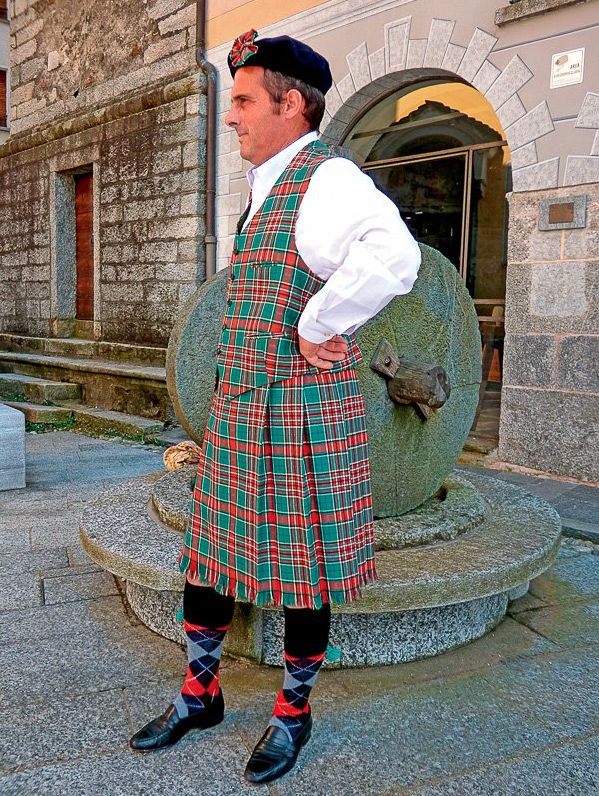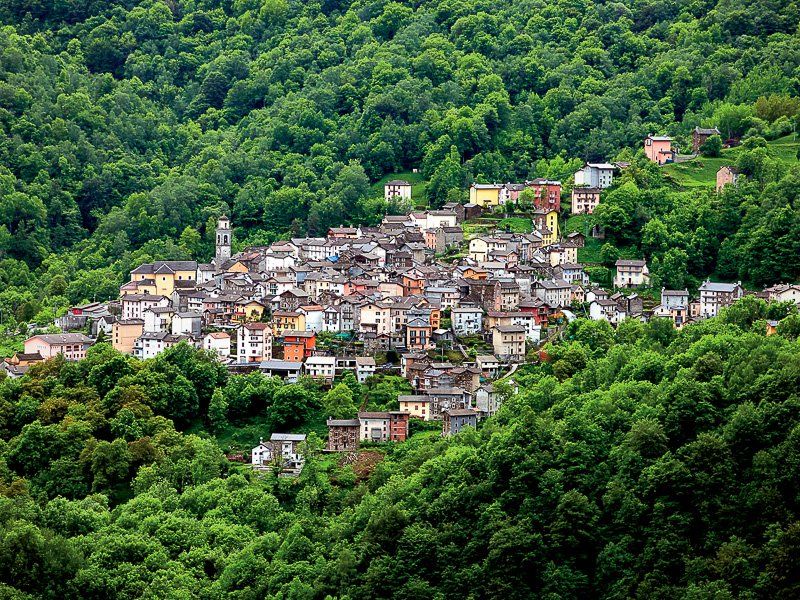Gurro

There is a small village high in the Italian Alps with some interesting characteristics, at least for a Scot. It has fewer than 300 inhabitants but there is a tradition of wearing plaid and their dialect has some distinctive words of no immediately obvious, local origin. The village is Gurro. It lies at an altitude of 812 m (almost 2,700ft) in the Cannobina Valley a half a dozen directly impassable miles or so from the Swiss border. To the east is Lake Maggiore. To the west is the Simplon Pass and actual access to Switzerland and the north.
And there is a story, which takes us back to 24th February 1525 and the Battle of Pavia, 120 miles to the south. It was a victory for the Austrian Habsburgs, in fact one that consolidated them as the major power in Central Europe over the defeated French, whose army of 26,000 included 17,000 mercenaries.
And the tale is thus. The French mercenaries included many Swiss and probably a number of Scots, Highland Scots. It is not impossible given the economics of the time and strength of the Auld Alliance. Scotland was an independent country and the Catholic, Gaelic Highlands largely independent of it. And on defeat those same Scots decided that retreat northward was the best option. They may have been heading for home or maybe the greater safety of the Swiss side of the border. The routes from Pavia across that border, particularly keeping out of potential trouble, are obvious today and they must have been then. But the winter in March in the high Alps is far from over and the fugitives were said to have been trapped by heavy snow precisely as they passed where Gurro stands today, with the result that liking what they found, be it a way of life not unlike home or beautiful, local women, of whom there are and no doubt were many, at least some of the till-then foot-loose soldiery stayed.

And the result would seem to be several. There is the local dress, specific to the village that a century ago had a population three times that of today's, but there are also said to other markers. The streets and the houses of Gurro are in a different style to those of neighbouring villages, the Cross of St. Andrew is built into structures and then there is the local playing of the pipes and words both in names and language. According to a Swiss study the local dialect contains some eight hundred words of Gaelic origin and both in local Christian and family names that are examples unlikely to coincidence - Lennett and Dromont (Lennox and Drummond) and Pattriti, Donaldi and Gibi (Padraig, Domhnall and Gib, Gibbe or Gibne).
So, as a first step on the Italian Trail, by crossing from Switzerland via the Simplon and turning east at Bosco above Domodossola you will climb over the pass to enter the Cannobina Valley with Gurro half-way down on a side road to the south. And from there you can continue down to Lake Maggiore, the North Italian plain and a day's drive onward to the next stop, Genoa, the Mediterranean and the not simply Scottish but Geo Davidson's Scots-football, indeed, Scots-sporting legacy to the home of Calcio.
Other Sources:
Back to the Italian Trail or the SFHGHome page